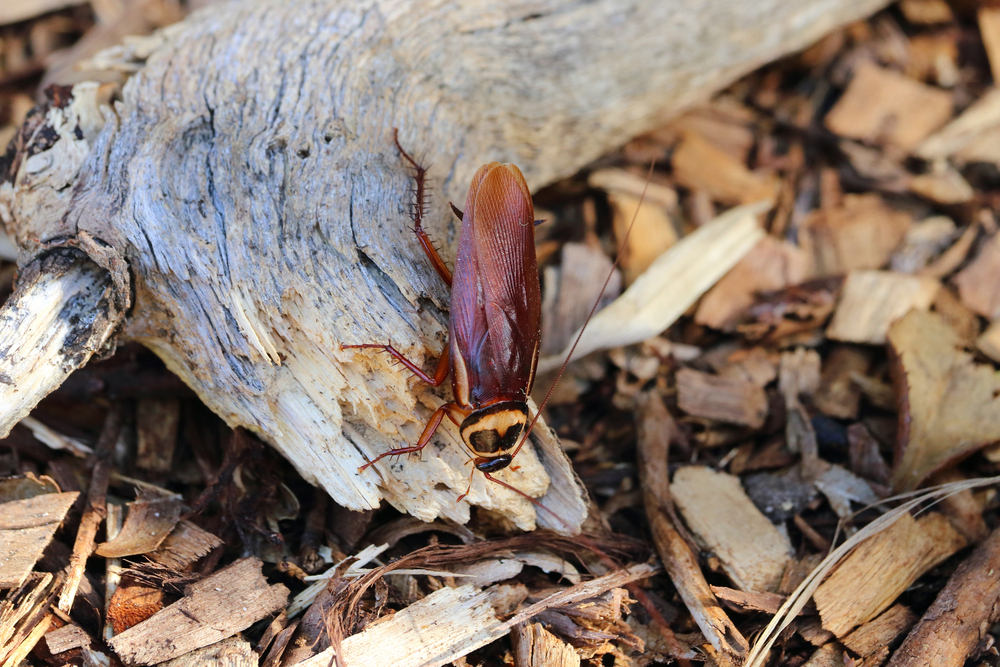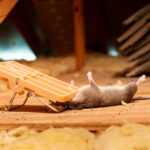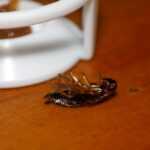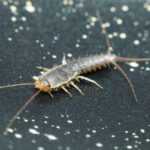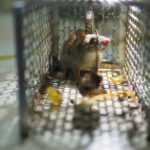Roaches 101: Identification, Facts & Effective Treatments
If you’re dealing with roaches, identifying the species and knowing how to treat them is crucial. This guide covers common roach types, signs of an infestation, health risks, and effective control methods. Read on to learn how to handle a roach problem effectively.
- Successful cockroach control begins with accurate identification of species, notably German, American, and Oriental cockroaches, each requiring specific management strategies.
- Recognizing early signs of infestation, such as feces, egg casings, and musty odors, is crucial for effective intervention and to avoid larger infestations.
- Preventing future infestations necessitates a combination of sanitation, sealing potential entry points, and employing both professional pest control services and DIY methods for effective management.
Identifying Common Roach Species
Recognizing the type of cockroach you are dealing with is key for effective control. In the United States, there are approximately 70 species of cockroaches, but only a handful are commonly found in homes and businesses.
The four most common types in New York City are:
- American cockroaches
- German cockroaches
- Oriental cockroaches
- Brown-banded cockroaches
Each species has unique characteristics and behaviors that require specific management strategies.
Cockroaches have distinctive features: a flattened body, an oval-shaped shield (pronotum), long antennae, and spiny legs designed for swift movement. Their sizes can vary, with common species ranging from 3/8 inch to 1 5/8 inches. Cockroaches prefer wet, dark environments and are often found in crowded city areas such as parks, train tunnels, and sewers, where cockroach nymphs may also thrive.
Below, the specific traits and habitats of the three most common cockroach species: German, American, and Oriental cockroaches are detailed.
German Cockroaches
German cockroaches are among the most common cockroach species in urban areas. They are light tan to brown in color and can be identified by the two dark parallel lines running from their head to their wings. These cockroaches are notorious for their rapid reproduction, leading to large german cockroach populations if not promptly controlled.
German cockroaches usually inhabit kitchens and bathrooms, where food spillage and moisture create ideal living conditions. Their presence is often linked to a food source and water sources, making cleanliness a critical factor in preventing infestations.
These pests prefer warm, humid environments, thriving at temperatures between 85–95°F.
American Cockroaches
The American cockroach is the largest of the common species, with a reddish-brown to mahogany color. Unlike German cockroaches, American cockroaches have the ability to fly, which can make them particularly unsettling when they take to the air.
These cockroaches are often found in basements, bathrooms, and other damp areas. They prefer environments with high moisture levels, such as boiler rooms and spaces near plumbing. Their large size and tendency to inhabit dark, damp places make them a formidable pest to eradicate.
Oriental Cockroaches
Oriental cockroaches are easily recognized by their shiny black to dark reddish-brown color. Unlike American cockroaches, the oriental cockroach cannot fly, and the females do not have wings.
These cockroaches prefer cool, damp environments and are commonly found outdoors, in bathrooms, wet basements, crawl spaces, and under porches. They are heavily reliant on moisture and thrive in dark, damp areas. Understanding their preferred habitats can help in effectively targeting and controlling their populations.
Signs of a Cockroach Infestation
Recognizing the signs of a cockroach infestation early can help prevent a minor issue from becoming a major problem. One of the most telling signs is the presence of cockroach feces, which can appear as small, dark specks resembling pepper. These droppings are often found along the routes cockroaches travel, providing clues to their hiding spots.
Another indicator of a cockroach infestation is the discovery of egg casings, or oothecae. These brown casings can be found in hidden locations such as cracks and crevices. Cockroaches reproduce rapidly, and finding these egg casings suggests a growing population that needs immediate attention.
A musty odor is another telltale sign of a significant cockroach population. This unpleasant smell is caused by the aggregation pheromones cockroaches release, which attract other cockroaches to the area. If you detect a musty odor in your home, it’s a strong indication that a cockroach infestation is present and requires prompt action.
Health Risks Associated with Cockroaches
Cockroaches are not just a nuisance; they pose serious health risks. The allergens produced by cockroaches can lead to severe and long-lasting allergy symptoms, often more intense than those caused by seasonal allergies. Proteins found in cockroach feces act as allergens and are linked to asthma, making them particularly hazardous for individuals with respiratory issues.
Cockroaches can contaminate kitchen counters, plates, silverware, and accessible food, posing a risk of foodborne illnesses. They are known to transmit up to 33 types of bacteria and several pathogens that can cause food poisoning and infections. The inhalation of particles from cockroach feces and body parts can provoke asthma attacks and other respiratory problems, especially in children and the elderly, making cockroaches dangerous.
Given these health risks, it is crucial to address any signs of a cockroach infestation promptly. Effective cockroach management not only improves the quality of life but also safeguards the health of everyone in the household.
Why Do You Have Cockroaches?
Understanding why cockroaches invade your home is the first step in preventing future infestations. Poor sanitation and accessible food sources are common reasons for cockroach infestations. Cockroaches are opportunistic feeders and will exploit any available food, water, and shelter.
Cockroaches can enter homes through cracks in the foundation, siding, and outer walls. They can also hitchhike into homes via infested items or shipments, making it essential to inspect any new items brought into your home. Once inside, they seek out tight, dark spaces like gaps and crevices for shelter.
Different species have specific habitat preferences. For instance:
- German cockroaches thrive in warm and humid conditions
- American cockroaches prefer damp areas like boiler rooms and plumbing
- Oriental cockroaches are heavily reliant on moisture and often inhabit cool, damp outdoor environments such as sewers and gutters
Recognizing these preferences can help in effectively targeting and preventing infestations.
Effective Cockroach Control Methods
To tackle a cockroach infestation, a combination of professional pest control services and DIY methods can be highly effective. An integrated pest management approach, which combines various tactics, is essential for successful cockroach control. When cockroach populations are small, they are easiest to manage, so early intervention is crucial.
Baits are among the most effective methods for controlling cockroach populations. They have proven to be highly successful in this regard. Cockroaches acquire a lethal dose of the bait through feeding, and the poison can be transferred to other cockroaches through oral and fecal secretions, effectively spreading the treatment. This method is particularly useful for treating hidden female cockroaches through the transfer of active ingredients from foraging individuals.
Professional Pest Control Services
For large and dispersed cockroach populations, hiring professional pest control services is often necessary. Professionals use a wide range of EPA-approved products, including natural products, baits, and mechanical means. These treatments are safe for both people and pets, offering peace of mind while effectively addressing the infestation.
Regular monitoring and maintenance by professionals can prevent future infestations and ensure long-term control.
DIY Cockroach Control Tips
Several DIY methods are available for those who prefer a hands-on approach to controlling cockroach populations. Vacuuming is an effective way to reduce infestations by capturing cockroaches. Combining vacuuming with flushing techniques, such as using a spatula or thin item to flush cockroaches out of hiding, enhances the effectiveness of this method.
Using a knee-high stocking or longer pantyhose with a vacuum can help catch cockroaches, making it easier to dispose of them.
Maintaining cleanliness, sealing cracks, and eliminating moisture are key to preventing cockroaches from establishing a foothold in your home.
Preventing Future Cockroach Infestations
Preventing future cockroach infestations requires a proactive approach. Sanitation is critical, as neglecting cleanliness can create favorable conditions for cockroach invasions. Proper food storage in sealed containers minimizes cockroach attractions and prevents infestations. Regular cleaning routines help eliminate food particles and moisture that could attract cockroaches and store food properly.
Sealing potential entry points, such as cracks and gaps around pipes, reduces cockroach access. Emptying pet food and water bowls during the evening can also deter cockroaches from invading your home. Eliminating sources of moisture is essential in discouraging cockroaches, as they thrive in damp environments.
By implementing these preventative measures, you can significantly reduce the likelihood of a cockroach infestation and maintain a clean, pest-free home.
Understanding the different species of cockroaches, recognizing the signs of an infestation, and being aware of the health risks they pose are essential steps in effective cockroach management. Whether you choose professional pest control services or DIY methods, early intervention and consistent preventative measures are key to keeping your home cockroach-free.
Frequently Asked Questions
How to get rid of roaches?
To effectively eliminate roaches, maintain a clean environment by removing food and water sources, decluttering, and vacuuming regularly. Additionally, employ roach baits and boric acid in hidden areas to target their habitats.
Why shouldn’t you kill roaches in your house?
Killing roaches in your house can spread bacteria and viruses from their bodies and legs onto surfaces, leading to potential contamination. Therefore, it is advisable to use integrated pest management strategies to effectively deal with roach infestations without causing further health risks.
Why am I getting roaches in a clean house?
Even a clean house can attract roaches due to environmental factors such as humidity and nearby landscaping. It is important to consider that these resilient pests seek out food, water, and shelter regardless of overall cleanliness.
What are the most common signs of a cockroach infestation?
The most common signs of a cockroach infestation are droppings, egg casings, and a musty odor. If you notice these indicators, it is crucial to take action promptly.
How do cockroaches affect human health?
Cockroaches significantly impact human health by triggering allergic reactions and asthma attacks while also spreading harmful bacteria and pathogens that can lead to various illnesses. It is crucial to maintain cleanliness and take preventive measures to mitigate these risks.
